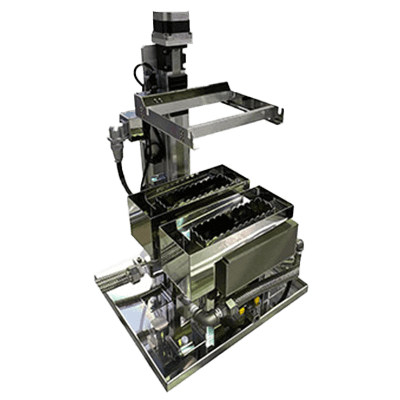What Is a Dip Coater?

A dip coater is a device designed for applying a coating solution onto a substrate. The dip coating method involves submerging the substrate into the coating solution and then lifting it out. This process allows the dip coater to uniformly coat the substrate.
Features of Dip Coaters
- Capable of forming an extremely thin, uniform film.
- Can coat both sides of a substrate simultaneously.
- Suitable for coating objects of any shape.
- No loss of coating liquid during the process.
- Easy to maintain the equipment.
Uses of Dip Coaters
Applications of dip coaters include:
- Objects to Be Coated: Lenses, glass materials, metal materials, catheters, faucet fittings, and more.
- Fields: Used in manufacturing optical lenses, medical devices, electronic devices, photolithography, and other applications.
- Coating Liquids: Utilized with various coating solutions such as mold release agents, water repellents, hard coatings, moisture-proofing agents, antifouling agents, resists, and more.
- Coating Types: Suitable for anti-reflection coatings, hard coats, mold release agent coatings, fluorine-based coatings, and others.
- Shapes: Applicable to cylindrical glass, helmet shields, PET bottles, dentures, porous ceramics, curved lenses, wafers, three-dimensional structures, and more.
Outline of the Dipping Process
This process involves vertically dipping a sample into a specified dip coating solution, then lifting it to allow the adhering liquid film to gel in air.
- The sample is vertically immersed in a dip coating solution bath.
- Pulling up the sample initiates the interaction between the viscous force of the dip coating solution, surface tension, and gravity.
- The pulling speed is controlled to manage the film thickness, considering the viscosity of the dip coating solution and the gravity of the adhering liquid flowing down.
- Once a uniformly thin film has been formed, it is dried.